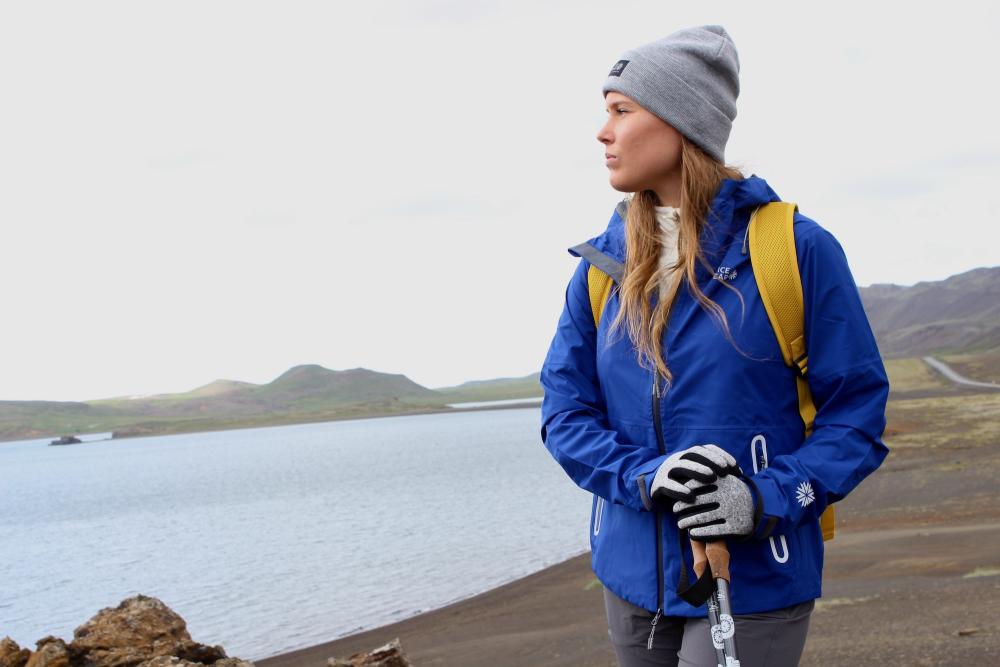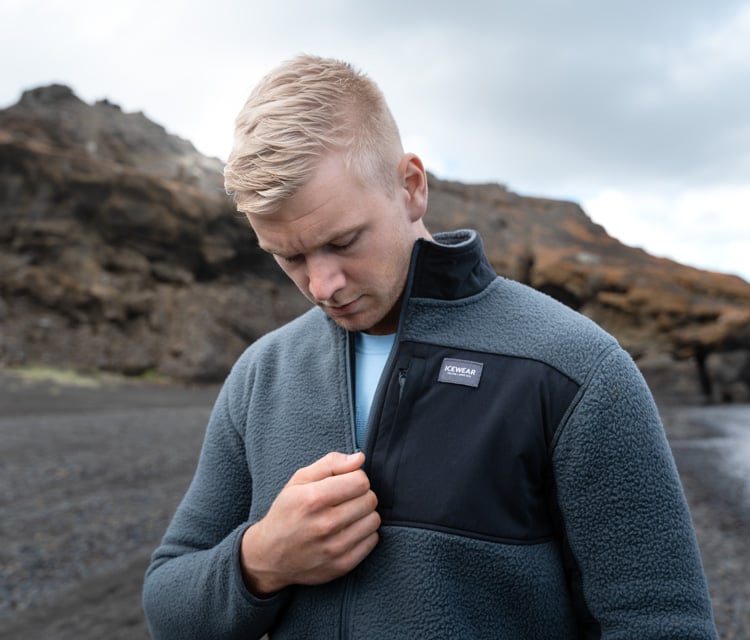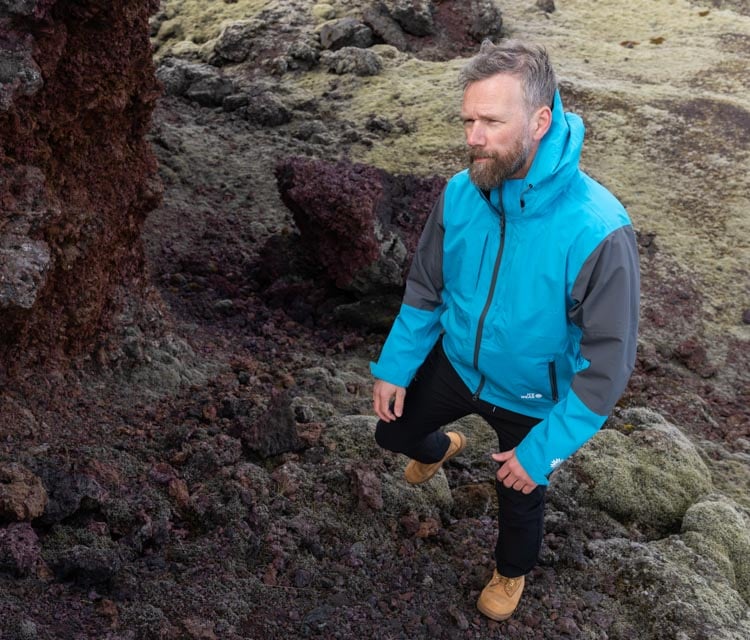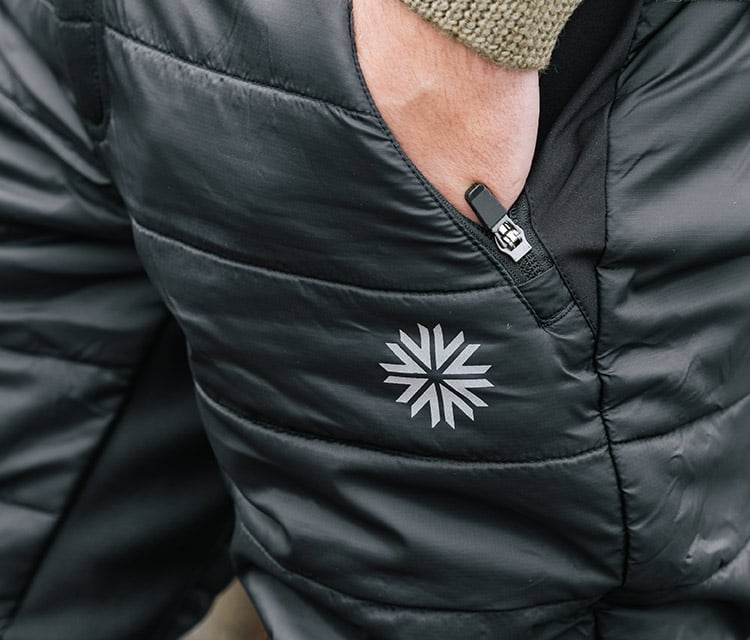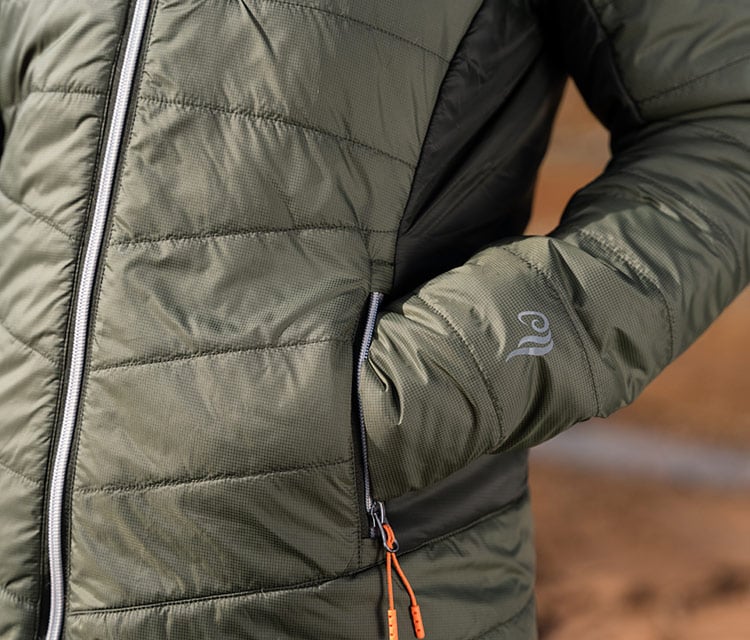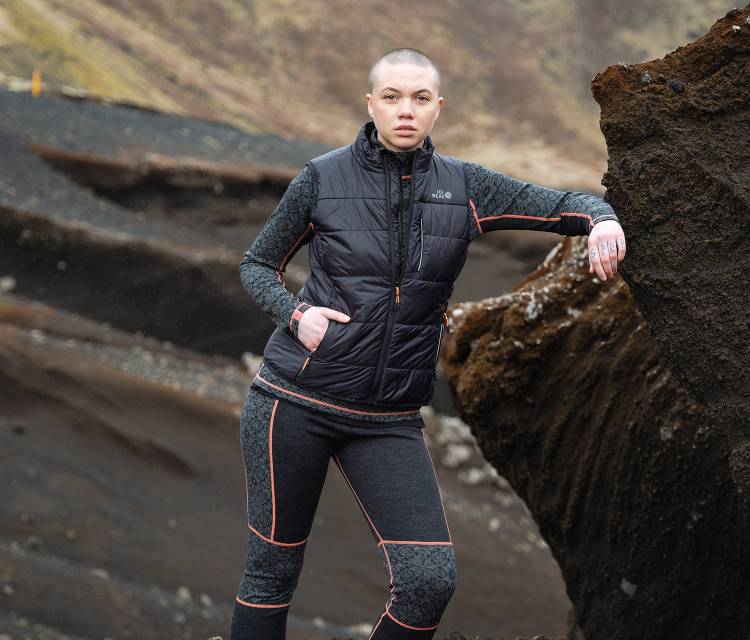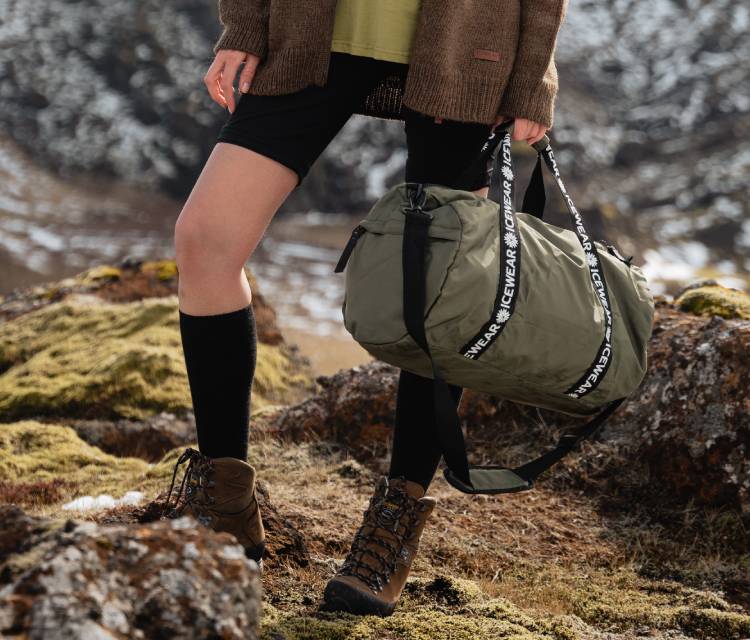Contents:
- Best Hikes in Iceland
- Day Hikes in Iceland
- Iceland Hiking Trails Further from the City
- Most Adventurous Hiking in Iceland – Far from the City
- The Laugavegur Trail
- The Best Campsites in Iceland
- Iceland Camping Card
- Wild Camping
- Terrain, Wildlife and Weather Conditions in Iceland
- Avoid Trouble: Planning for Icelandic Weather
- Clothing for Hiking in Iceland
Key findings about Iceland hiking trails and hiking in Iceland:
- Hiking in Iceland opens a world of adventure and offers unparalleled memories for all ages and abilities.
- Iceland hiking trails lead you through majestic landscapes of colorful mountains, black deserts and lava fields, steaming hot springs, and so much more.
- Iceland has many beautiful day hikes for any local or tourist to make the most of one day without needing to camp overnight. Many of the most popular day hikes are just outside of the capital city Reykjavik.
- For hikers looking venture off to trails further out from the city, there are countless breathtaking options.
- The best campsites in Iceland depend on how you plan to travel there as well as the hiking site you're after (e.g., cars, campers, hikers).
- The Iceland Camping Card is a special pass you can purchase that allows you and your family to camp together at specific campsites around the country.
- The terrain in Iceland is as varied as the people who trek it. The weather, too, will vary by area and by the time of year. The conditions will vary based on the distance from the coast and the surrounding terrain as well.
- Don’t forget that there can be sunlight and heat in Iceland! Even hiking on a glacier, there’s so much reflected light that hikers easily become burned or feel dehydrated.
Hiking in Iceland opens a world of adventure. It offers unparalleled memories for all ages and abilities. There’s no better way to experience any place than by hiking, and Iceland hiking excursions are unforgettable.
Iceland is an island nation right along the Arctic Circle that has more sheep as it does people. The whole country has a (human) population of just over 366,000 (as of 2020). Most of the population lives on the Reykjanes peninsula which includes the capital Reykjavik, and Keflavik International Airport.
For hiking enthusiasts, this means the only way to truly experience the vast uninhabited landscapes of this diverse and breathtaking country is on your own two feet.
There’s so much hiking you can do in Iceland that you could never see it all. So, take your pick of stunning waterfalls, or steaming hot springs, or volcanoes, or glaciers, or any combination of these natural wonders. Just be sure to come prepared. Everything you need to know is right in this article.
Best Hikes in Iceland
Iceland hiking trails lead you through majestic landscapes of colorful mountains, black deserts and lava fields, steaming hot springs, and so much more.
Choosing the best hikes in Iceland, however, isn’t always a question of what you most want to see. Sometimes, it’s a question of what is easiest to work logistically into your travel plans.
Day Hikes in Iceland
Iceland has many beautiful day hikes for any local or tourist to make the most of one day without needing to camp overnight. Many of the most popular day hikes are in or just outside of the capital city Reykjavik.
- Mount Esja is a 914-meter-high hike that rewards you with stunning views of Reykjavik and the Atlantic Ocean. The trail is open all year and is a 20-minute drive from the city (with public transportation available to get there, too). The 4.3-mile trail takes between two and three hours to hike due to the steep climb. Metal steps and chains will assist those who want to go to the very top.
- Mount Úlfarsfell is a smaller mountain (standing at 315m high) and is also close to Reykjavik. Public transportation to the head of the trail is available, but only to the main route parking lot which gives you a shorter hike of about 2 miles. You can take several paths, but the full trail is a little longer than Mount Esja—almost 5 miles—meaning the shorter stature of the peak and overall longer path make for an easier climb overall.
- Mount Helgafell is a 350-meter-high hike near Hafnarfjörður, which sits south of Reykjavik. This trail starts close by the city, which is good, because the full hike takes an average of two hours. Devote the time to this almost-4-mile hike and you’ll be rewarded with unbelievable views of the city and nearby hills.
Iceland Hiking Trails Further from the City
For hikers looking to use their Iceland camping card and venture off to trails further out from the city, there are countless breathtaking options.
- The Hveragerði Hot Spring River Trail is one of the most popular hiking destinations in the country. Just read the name and you can imagine why. The trail departs from the town of Hveragerði and first climbs a steep stretch of a mile that brings you to the top of a mountain. From there, you traverse an easier flat terrain toward the geothermal river where you can bathe in warm water. The whole trail is about 10.5 miles (back and forth), however if you walk from Hveragerði to the trail head, too, you’ll add on another 2.5 miles. The extra time on your feet is worth it, because the route offers much to see. (For the extra-adventurous, from the geothermal river you can even walk to Þingvellir, or the old meeting place for parliament.)
- Hvalfjörður is a fjord offering a whole network of hiking paths. This natural beauty is an example of what hikers get to know better than anyone, because anyone driving to Borganes by car will miss Hvalfjörður completely when they drive through a nearby tunnel. For those who do venture to the fjord to explore the trails, the prize is seeing the beautiful Glymur Waterfall nearby. Note that the cable to assist the river crossing is closed during winter time.
- The blue lagoon area is a path along a scenic waterscape. Continuing south from Reykjavik, you’ll find these routes before reaching the Keflavik International Airport. The blue lagoon system of footpaths winds through a lava field. It´s a few miles from the recent eruption site at Fagradalsfjall, which is truly a sight to behold.
Most Adventurous Hiking in Iceland (Far from the City)
Longer drives from Reykjavik open the door to many unparalleled hikes hidden in the extensive and diverse landscapes of Iceland.
- Hornstrandir is a 227-square-mile natural reserve considered “one of the last spaces of true wilderness” in Europe. Because of its location in the furthest throes of the Westfjords, it has a short season, but is well worth the days-long adventure to get there, camp and explore. The mountains appear to scratch the sky, and the cliffs leave you with that daunting end-of-the-world feel when you look out to the sea. This breathtaking reserve is a hiker’s dream.
- Ásbyrgi Canyon in Northern Iceland comes with many myths and legends. The canyon stands as a great chasm (more than half a mile wide) in the shape of a horseshoe. It’s no wonder that it’s also called “The Shelter of the Gods.” Visit Ásbyrgi Canyon for your pick of different hiking paths, each offering varying lengths and difficulty. Camping, too, is available above the canyon.
- Landmannalaugar is an area perched in Iceland’s highlands, right on the edge of the Laugahraun lava field. Its rugged landscape is multicolored with endless hikes up and down mountain paths, including hikes as short as two hours or as long as four days.
- Hvannadalshnukur (Hnúkinn) Mountain is the highest peak in Iceland. Soaring above the surrounding landscape at 2110 meters high, the summit is the highest point over the crater rim of the Oræfajökull Volcano. When it comes to hiking, there’s no better pay-off than the ocean views from its peak. It also sits right next to Skaftafell National Park, offering 1,050 square miles of terrain to hike before or after your mountain adventure. Hnúkinn and Skaftafell together merit a multiple-day hiking trip.
For those who wish to dive into ancient times, you might find roads the Vikings walked to Þingvellir (parliament). Locals and tourists alike can relive the epic journeys that families used to travel along these paths on horseback, equipped with only the clothes, food and shelter they could make.
The Laugavegur Trail
The Laugavegur Trail merits a special mention. On this route, you won’t find souvenir stores or bars. No cafés will be vying for your attention. There will be no Iceland clothing brand to discover along the way. If you’re after an expeditious hike, Laugavegur will not disappoint.
The distance of the Laugavegur Trail comes in at a whopping 34 miles. Most travelers take four days to traverse it in its entirety. It has many other people on it at a given time and is clearly marked. It’s still recommended to come with a GPS-enabled device and a map due to its length and to ensure safety in any unexpected weather.
Everything about this trail is rich in tradition. One such feature you’ll notice are the stacked stones used for markings as you trek. These curious-looking rock piles are called vörður, or cairns in English. Icelandic settlers started using vörður over 1,000 years ago to mark landmarks and roads. You’ll primarily find modern wooden pole markers along Laugavegur, but these occasional vörður give the experience a true timelessness.
On this magnificent foot path, you can take in the landscape that National Geographic has named one of the “best in the world.” Enjoy the yellow rhyolite mountains, mighty canyons, black sand deserts, multiple volcanoes, and the formations they have left in volcanic rock.
Each hiker can choose how to walk Laugavegur, which gives you full control over the hike’s difficulty. Some people walk south—onward from Þórsmörk—to connect with the Fimmvörðuháls Trail. This well-walked trail leads you along the 2010 Eyjafjallajökull Volcano eruption site that created two new hills nearby. This southbound journey ends at the Skógafoss waterfall.
The Laugavegur Trail is only accessible from June to August because of the highland road used to get there. The trail is well maintained, but not without its dangers, even in tourist season. Snow-covered bridges can collapse. Hikers should also expect hailstorms, rain, and temperatures around freezing at night.
After your expedition, once you eventually return to Reykjavik, an interesting trivia fact is that Laugavegur is also the name of the main shopping strip in the center of the city.
The Best Campsites in Iceland
The best campsites in Iceland will depend on where you want to hike, or whether you want to simply weather the elements atop a glacier or in the heart of a natural reserve.
It also depends on how you plan to travel. Consider looking for specific campsites that tout access for:
- Caravans
- Cars or campers
- Bicycles
- Hikers
For example, camping options at Ásbyrgi Canyon are varied, with spaces suitable for tents, campervans and mobile homes.
The camp site at Vaglaskógur, in contrast, is a site sheltered by the forest that is best suited for tents and folding campers. This site is high up in the northernmost coast of Iceland and is also open for a limited window between late May and mid-September.
When searching for your camping options, be sure to gather these data points on each to pick the one that offers the experience you’re after:
- Proximity to towns
- Types of camping allowed
- Access to hiking trails
- Open season
- Amenities
Iceland Camping Card
The Iceland Camping Card is a special pass you can purchase that allows you and your family to camp together at specific campsites around the country. Throughout most of the favorite hiking sites and natural reserves, the Iceland Camping Card gains you entry into 35 different locations.
The pass is not required to camp anywhere. You can simply pay separately for each night at each campsite instead. This often makes more sense for groups traveling with additional adults.
Wild Camping
Arguably, there’s no better place to wild camp than in Iceland. Defined by its rugged and uninhabited—but breathtaking, and sometimes life-changing—landscapes, spending a night under the stars is something you will never forget.
Wild camping is as close to nature as you can get. That said, man’s collection of packaged foods and personal care items and gas-powered vehicles aren’t “natural” on their own, and so wild camping rules have changed since 2015 to better protect the environment.
Specifically, many sites have banned motorhomes and campers that stop to stay overnight outside of designated campsites. National Parks are of limits too, as well as privately owned pieces of land. So, if you do plan to sleep under the stars, your set-up might be a foot hike away from a night in sleeping bags.
Terrain, Wildlife, and Weather Conditions in Iceland
The terrain in Iceland is as varied as the people who trek it. You can find paved paths in and around the capital Reykjavik to enjoy cycling, running, and walks around the city. Or you can hike the steepest mountain in the Reykjavik area, Mount Esja. You can trudge across glaciers in the north of the country. You can wind along geothermal rivers like on the Hveragerði Hot Spring River Trail.
Wherever you go in Iceland, be prepared for the specific terrain you signed up for.
The weather, too, will vary by area and by the time of year. Not only do winter temperatures stay below zero, but the lack of sunlight in the winter makes most hikes less practical in winter months. The hours of light each day starts shortening in late June until the shortest day right before Christmas. On that day, the sun hardly peaks over the horizon before hiding away again.
Ocean currents, glaciers and mountains all have their effect on the weather, too. It´s recommended to not just look at campsites in Iceland maps and assume that everything further north is colder. The conditions will vary based on the distance from the coast and the surrounding terrain, too, so do your homework to get specifics of what to expect.
It’s those same ocean currents that keep Iceland warmer in the winter than many people imagine, also. There’s no real “best time to visit Iceland” because winter is milder in some parts of the country, and other trails and hiking adventures depend on selecting a later time of year.
Still, many of the best hiking sites do see colder temperatures in the winter that require protective winter clothing. Since hiking season for many sites is limited to summer months, however, this won’t be the case for every trip.
Don’t forget that there can be sunlight and heat in Iceland, too! Even hiking on a glacier, there’s so much reflected light that hikers easily become burned or feel dehydrated.
Avoid Trouble: Planning for Icelandic Weather
Dress for the occasion and always taking into account the activities that you planned, the time of year, and what access you’ll have (or won’t have) to buy gear at a shop along the way.
One mistake tourists often make is wearing cotton-blend garments on hikes, which are inadequate for most hiking conditions. Cotton doesn’t keep you warm enough in the winter, and it doesn’t wick sweat away.
There are no dangerous animals to be wary of in Iceland, but the weather can be just as perilous. Search and rescue teams in Iceland are volunteer-based and most depend on donations. This means that the responsibility for your safety falls on you.
Above all, respect nature and the rules of whatever reserve, trail, or campsite you’re at. Those rules are there for your safety and for the safety of natural habitats. When it comes to trash, there’s no excuse to leave it behind.
Clothing for Hiking in Iceland
Most of your clothing decisions will be made based on the weather factors mentioned above. That said, there are also logistical considerations. For example, at Laugavegur Trail, you can backpack the four-day adventure and have your items brought to you by jeep each night when you settle in wherever it is you plan to stay.
Staying at a hut along a hiking path will also require different clothing than if you plan to wild camp, for instance.
Whatever your experience—and no matter what time of year—the key to clothing for hiking in Iceland is to think in layers. Layering is the foundation of dressing for Icelandic weather and the hiking adventures you dream of.
An Iceland clothing brand like Icewear is designed to be layered. There are “base layers” designed to wick away sweat, then mid-layers (for cold weather) that are also top layers (in nicer weather), like traditional wool sweaters. Wool has natural temperature regulation qualities. (Wool sweaters have been used for centuries in Iceland for a reason.) Top layers include articles like parkas that were designed as the layer most resistant to the elements.
There are plenty of hiking packing lists out there, but this one captures the essentials for an Icelandic hiking and camping adventure:
- Backpack
- Rain pants
- Rain jacket
- Parka or down jacket
- Water shoes (for river crossings)
- Hiking shoes
- Hiking pants
- Long wool underwear
- Wool socks
- Wool or fleece sweater
- Gloves
- Hat
- Tent
- Sleeping mat
- Sleeping bag (rated for winter)
- Pillow
- Dry bags
- GPS
- Power bank
- Headlight
- Hiking poles
- Food
- Cooking set
- Money for incidentals
What makes hiking in Iceland so exciting is the endless variety. Travelers explore new horizons year after year, ticking off more trails, reserves, mountaintops and other breathtaking destinations off their lists.
The best way to experience a place is by hiking through. No two hiking experiences you have in Iceland will be alike. Prepare yourself for endless wonder.

